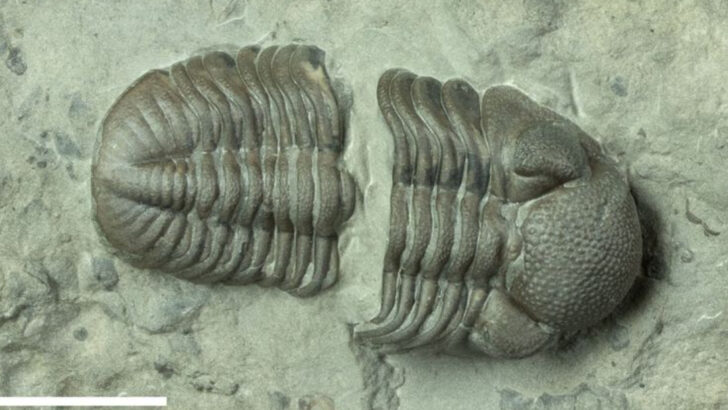Step back in time and uncover the secrets of Earth’s distant past through 29 incredible animal fossils. These ancient relics are more than just bones—they’re windows into lost worlds, offering a glimpse into species that roamed the Earth millions of years ago.
Each fossil tells a story, revealing not only the creatures themselves but also the environments they once inhabited. From colossal prehistoric predators to tiny creatures that shaped the ecosystem, these fossils help us piece together the puzzle of life long gone.
Join us as we journey through time, marveling at the incredible discoveries that continue to inspire awe and wonder. These fossils are more than relics—they’re reminders of the Earth’s ever-changing history.
Archaeopteryx Lithographica
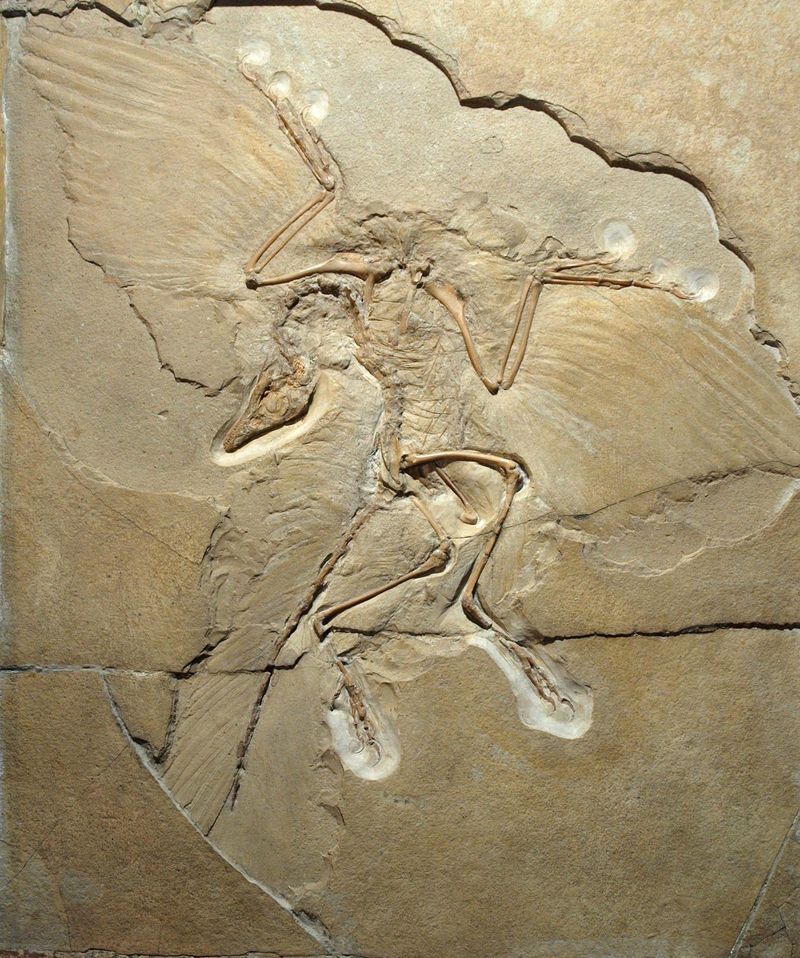
The Archaeopteryx Lithographica is a fascinating blend of dinosaur and bird, showcasing a pivotal point in evolutionary history. This creature had feathered wings, hinting at the transition from terrestrial life to flight.
Discovered in a limestone deposit in Germany, the fossil is remarkably well-preserved, allowing scientists to examine its intricate details. With a blend of avian and reptilian features, it offers a glimpse into the evolutionary path of modern birds.
Trilobite
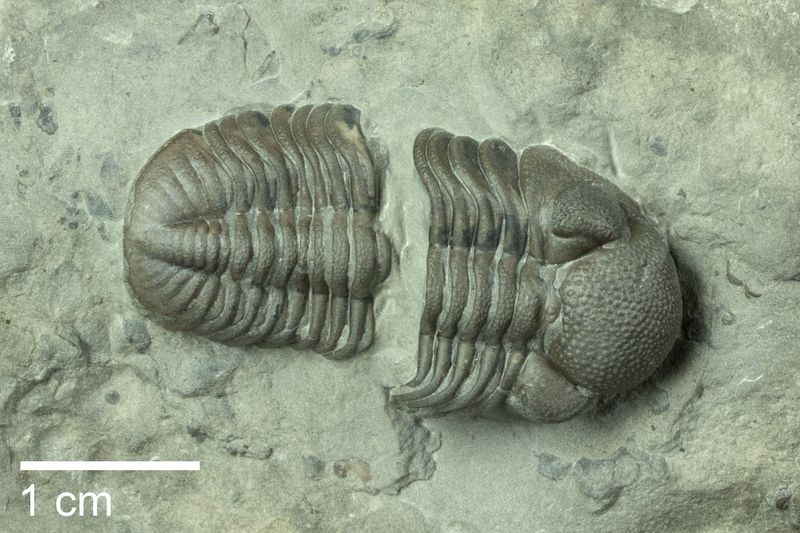
Trilobites are one of Earth’s earliest known arthropods, and their fossils are found worldwide. These marine creatures thrived in ancient oceans, adapting to various environments.
Their segmented bodies and intricate exoskeletons are a testament to nature’s design, preserved beautifully in rock matrices. Trilobites offer insights into early life and the evolution of complex organisms, with fossils ranging from simple forms to highly ornamented species.
Mammoth Tusk
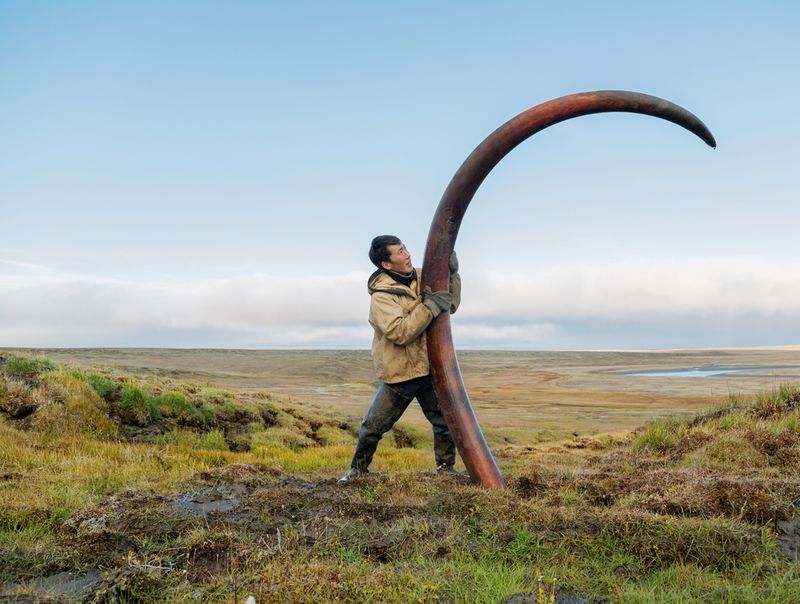
Mammoth tusks provide a snapshot of the Ice Age, where these majestic giants roamed vast landscapes. Their spiraled growth patterns tell stories of survival and adaptation in harsh climates.
Found in Siberian permafrost, these fossils are extraordinarily preserved, revealing clues about ancient ecosystems. They serve as a reminder of the dynamic changes Earth’s climate has undergone over millennia.
Dunkleosteus Terrelli
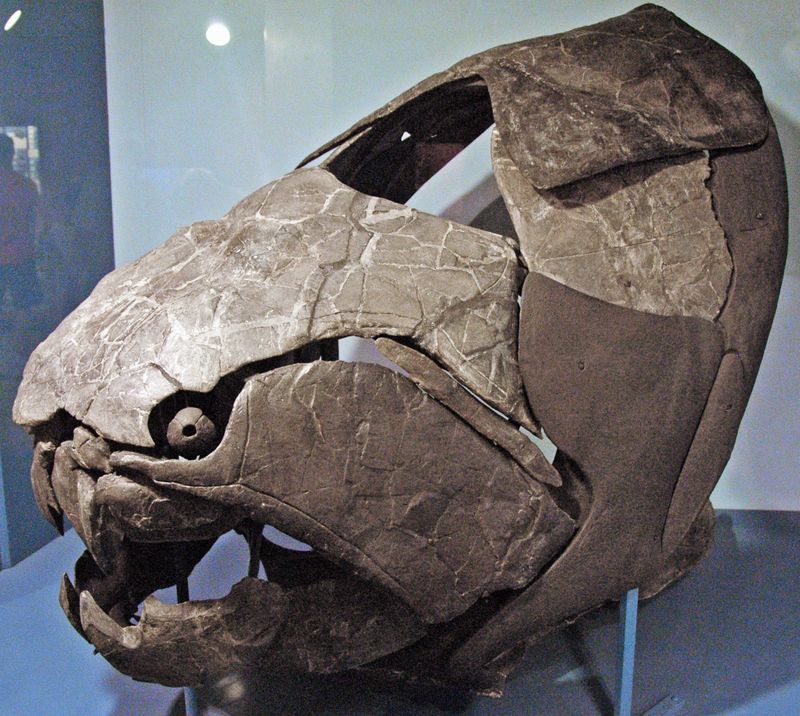
The Dunkleosteus Terrelli is a fearsome ancient fish, known for its powerful jaw and armored head. This predator dominated Devonian seas, preying on anything in its path.
Fossils of its skull are often found in shale formations, highlighting its impressive size and strength. Dunkleosteus offers a glimpse into the aquatic life of prehistoric times, with its robust build and dynamic hunting strategies.
Pterodactyl Wing
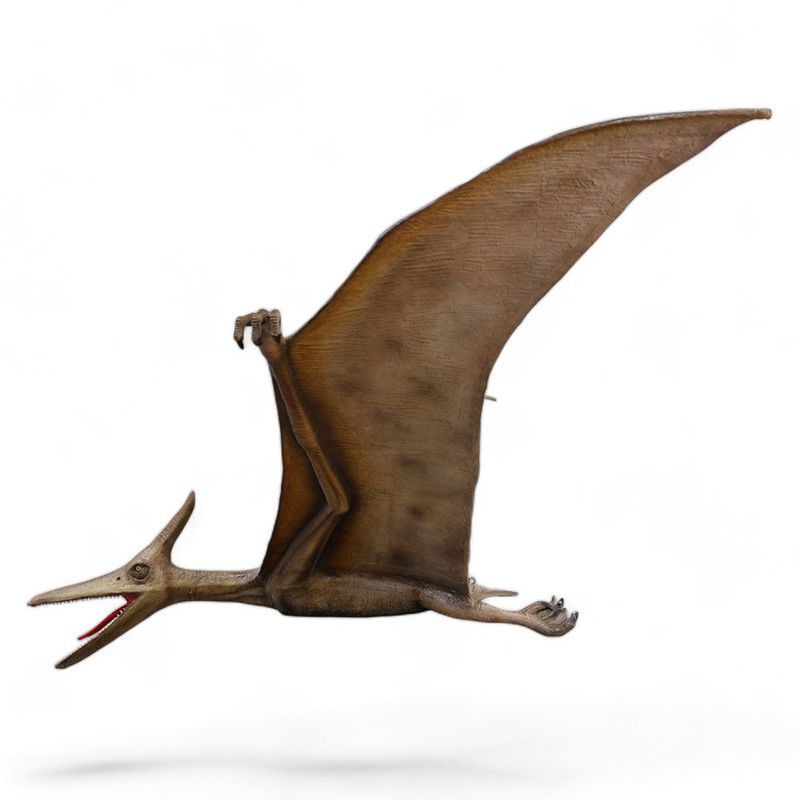
Pterodactyl wings reveal the marvel of flight in ancient reptiles, with a structure similar to bats.
These fossils show fragile bones with a leathery membrane, providing insights into how these creatures soared through prehistoric skies. Encased in sedimentary rock, they highlight the adaptation of life from land to the air.
The Pterodactyl’s evolution emphasizes the diverse forms of life during the age of dinosaurs.
Coelacanth Fossil
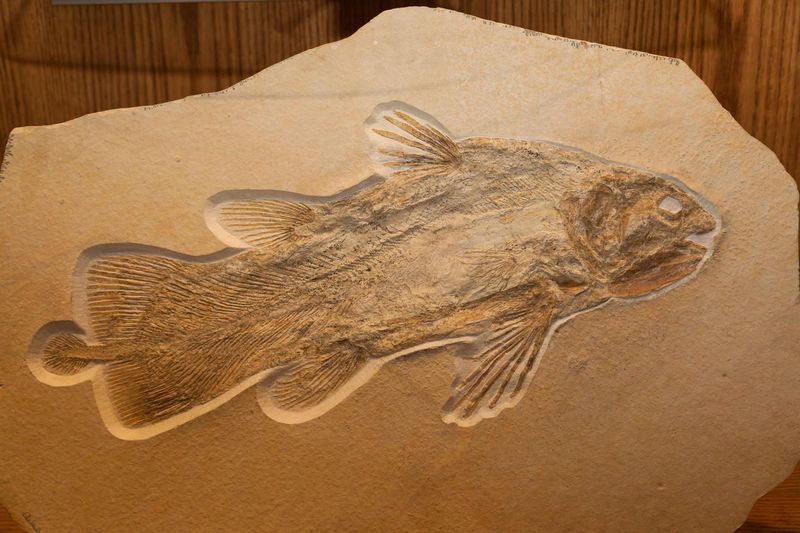
The coelacanth, once thought to be extinct, represents a living fossil linking ancient fish to modern species. Discovered in the early 20th century, these fossils reveal the unique lobed fins that hint at the evolution of land-dwelling vertebrates. In a remarkable twist, live coelacanths were found off the coast of South Africa, astonishing scientists worldwide.
Coelacanth fossils provide vital insights into the transition from aquatic to terrestrial life. Their distinctive anatomy, including a hinged jaw and symmetrical tail, showcases evolutionary adaptations that were crucial millions of years ago.
These features continue to captivate paleontologists and evolutionary biologists today.
Studying these ancient fish enhances our understanding of evolutionary biology and underscores the importance of preserving current biodiversity. The coelacanth remains an enduring symbol of life’s resilience and adaptability.
Tyrannosaurus Rex Tooth
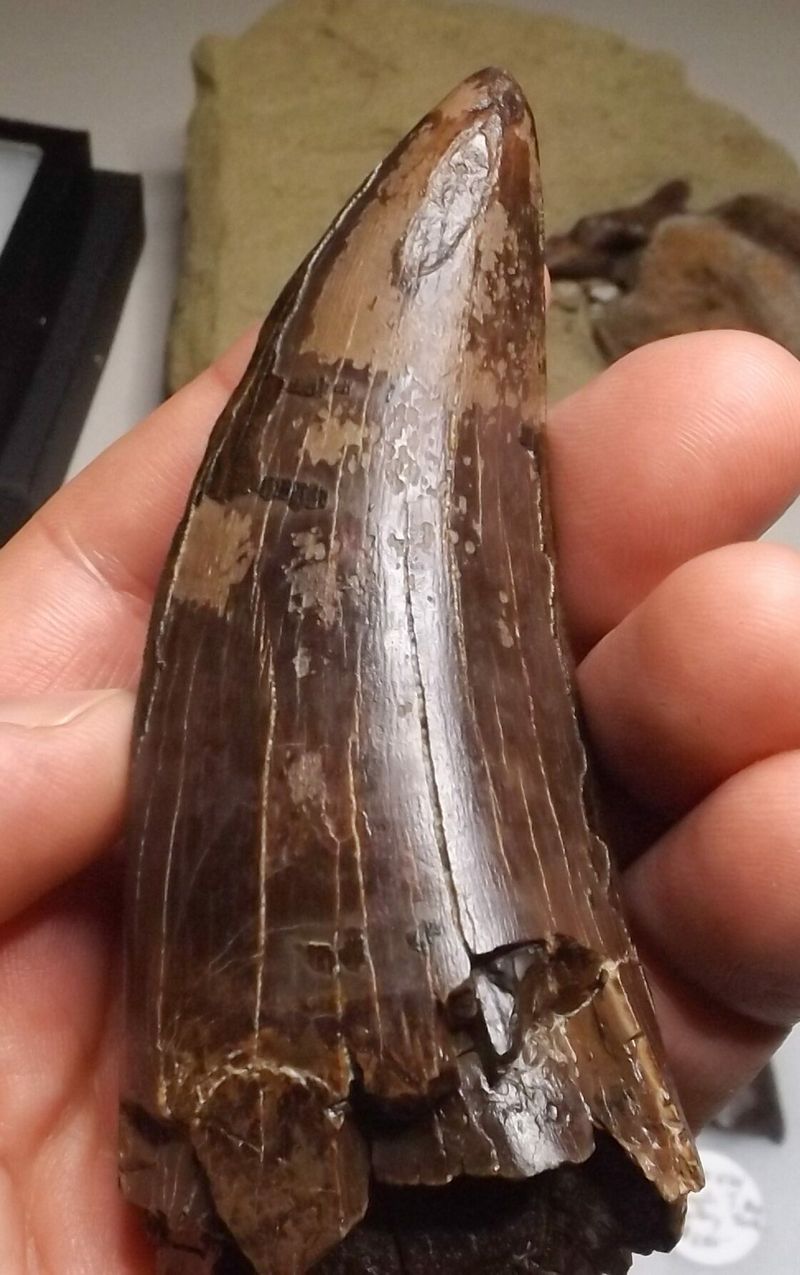
The Tyrannosaurus Rex tooth, a symbol of prehistoric power, captivates with its sheer size and menacing serrated edges. Buried deep within ancient sediments, this fossilized tooth reveals the ferocity of one of the Earth’s most formidable predators.
These teeth, often exceeding a foot in length, were perfectly adapted for crushing bone and flesh alike. Imagine the awe of discovering such a relic, a testament to a creature that dominated the Cretaceous landscape.
Holding this tooth is like holding a piece of Earth’s wild past, whispering tales of survival and dominance. Truly, it’s a glimpse into the jaws of history.
Saber-Toothed Cat Skull
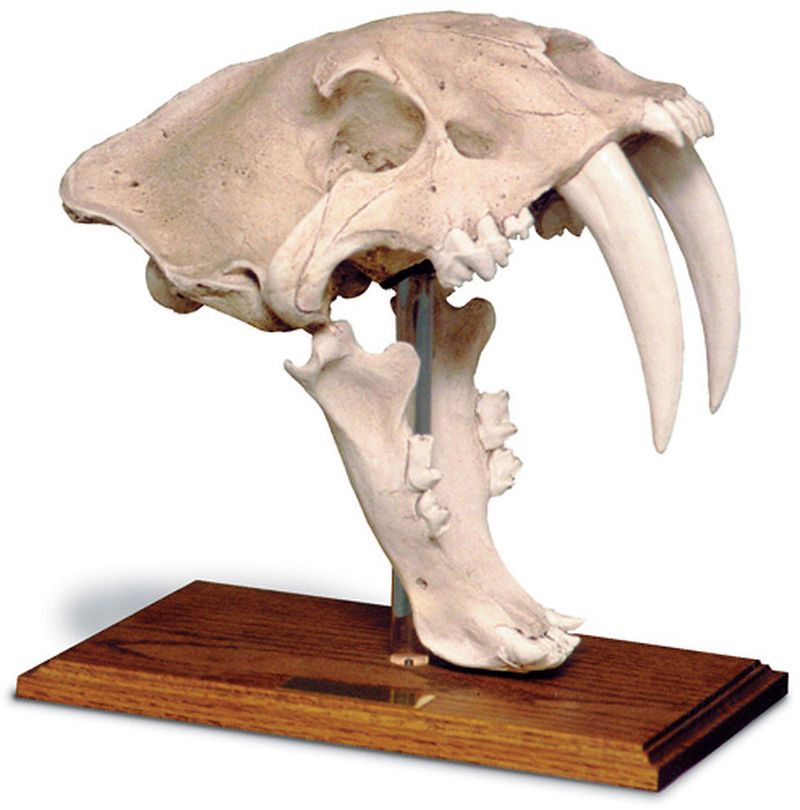
The saber-toothed cat skull stands as a powerful emblem of prehistoric adaptability. Its elongated canine teeth, often reaching lengths of up to seven inches, were lethal weapons in ancient hunting grounds. This fossilized skull provides a window into the lives of these formidable carnivores, which roamed the Pleistocene epoch.
Each curve and cavity of the skull tells a story of evolution, adapting to the ecological challenges of its time. Imagine uncovering such a discovery, a direct link to an era where survival required both strength and skill.
The skull invites us to ponder the fierce beauty of nature’s designs.
Ichthyosaur Vertebrae
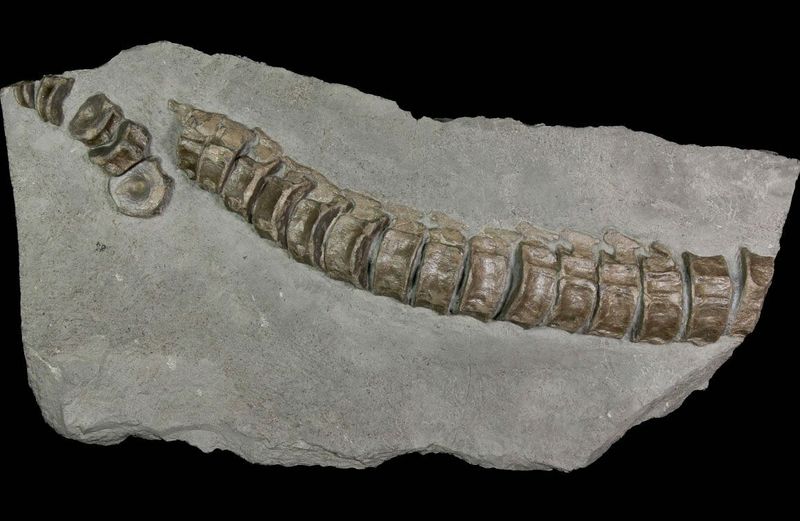
Ichthyosaur vertebrae fossils offer intriguing insights into the lives of these ancient marine reptiles. Resembling modern dolphins, ichthyosaurs thrived in the vast oceans during the Mesozoic era.
Their streamlined bodies and fish-like fins hint at remarkable adaptations for aquatic life. These vertebrae, often found in clusters, help reconstruct their enormous spine, showcasing their swift and agile nature. The discovery of such fossils invites imaginations to wander through prehistoric seas, teeming with life and mystery.
It’s a reminder of Earth’s ever-changing nature and the diverse forms life has taken in its waters. These relics echo ancient ocean tales.
Megalosaurus Femur
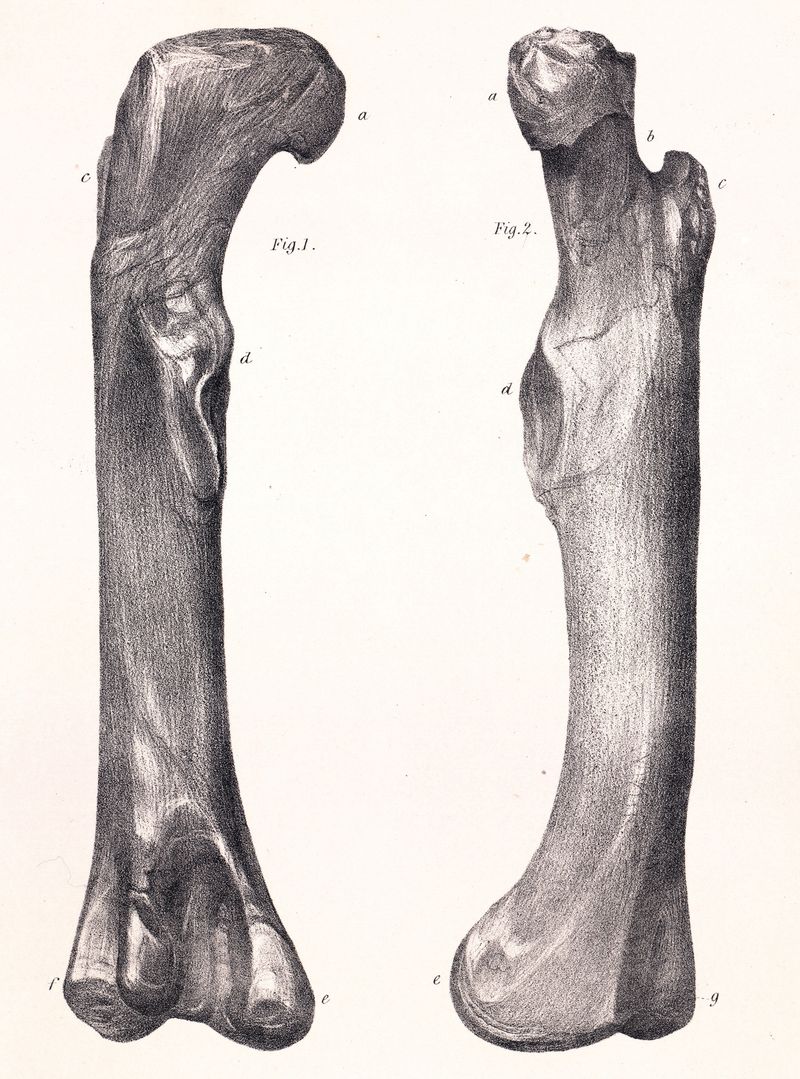
The Megalosaurus femur, a colossal bone fossil, speaks volumes about the dinosaur’s formidable size and strength. As one of the earliest named dinosaurs, Megalosaurus roamed the Jurassic landscapes with its powerful limbs.
This femur, often several feet long, supports the theory of its bipedal stance, enabling swift pursuit of prey. Each fossilized bone is a puzzle piece, revealing the past ecological dynamics. Imagine the thrill of piecing together such a giant, uncovering insights into a world where these mighty creatures reigned supreme.
Holding this femur is akin to holding a key to Earth’s Jurassic story, rich and untamed.
Dodo Bird Skeleton
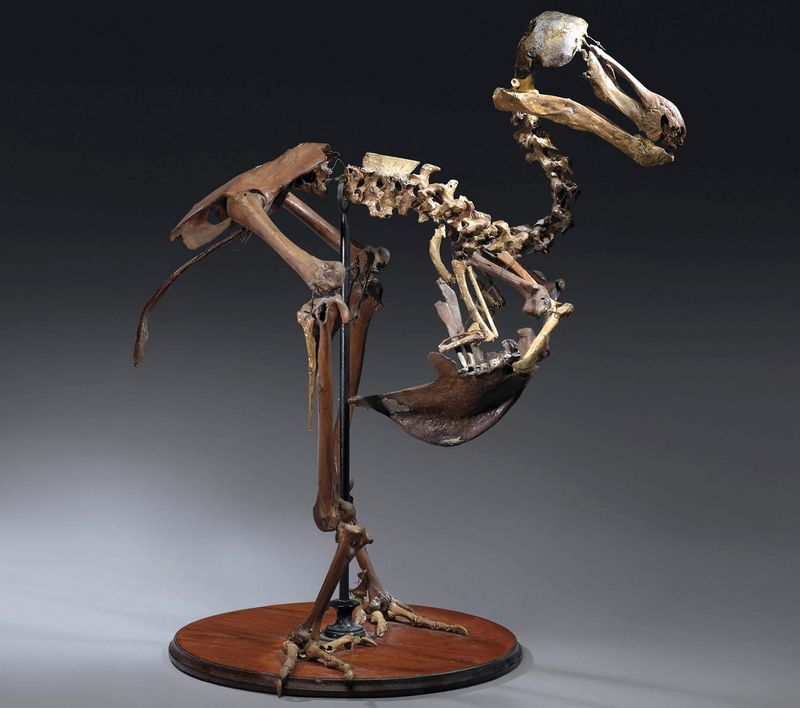
The dodo bird skeleton, a symbol of extinction, evokes a poignant reminder of nature’s fragility. Native to Mauritius, the dodo thrived until human activities sealed its fate in the late 17th century.
This complete skeleton offers a rare glimpse into the anatomical peculiarities of this flightless bird. Its robust legs and large, hooked beak hint at a life well-suited to its island habitat. Examining these bones fosters an appreciation for biodiversity and the delicate balance sustaining it.
This skeletal relic encourages reflection on the impacts of human actions on ecosystems, urging preservation of Earth’s remaining natural wonders.
Giant Sloth Claw
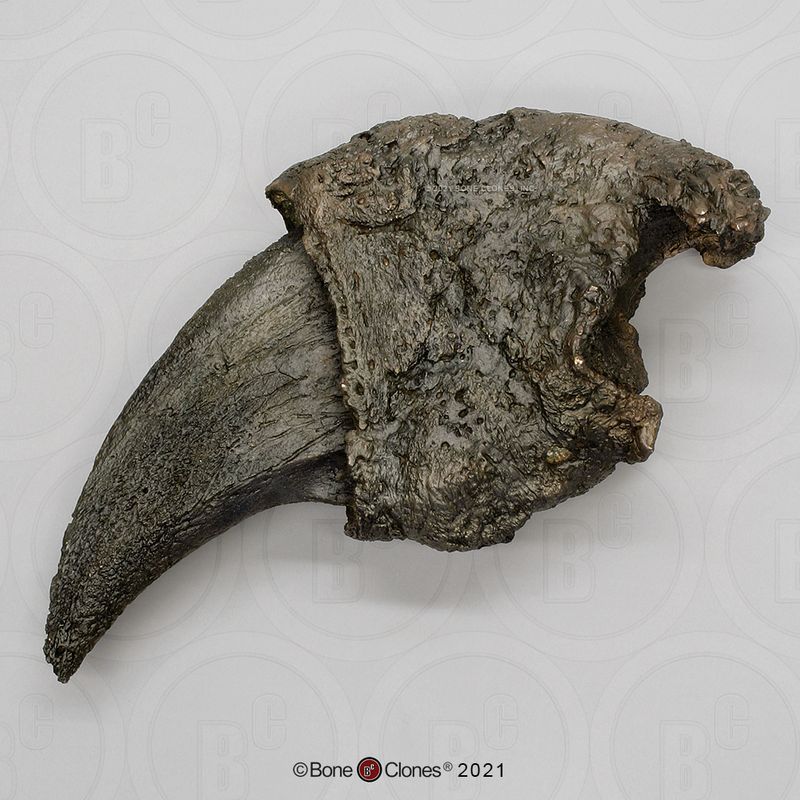
The giant sloth claw, curving fearsomely, serves as a testament to the unique giants that once roamed the ancient Americas. These claws, formidable tools, aided in foraging and defense.
As part of the massive ground sloths, these creatures could reach sizes rivaling small elephants. Such fossils open windows to a lush past where megafauna thrived in dense forests and open plains.
Each curve and crevice of the claw tells tales of survival in a wilderness long vanished. Holding this fossil is like clasping a piece of Earth’s grandeur, inviting wonder about the giants that have walked before us.
Anomalocaris Appendage
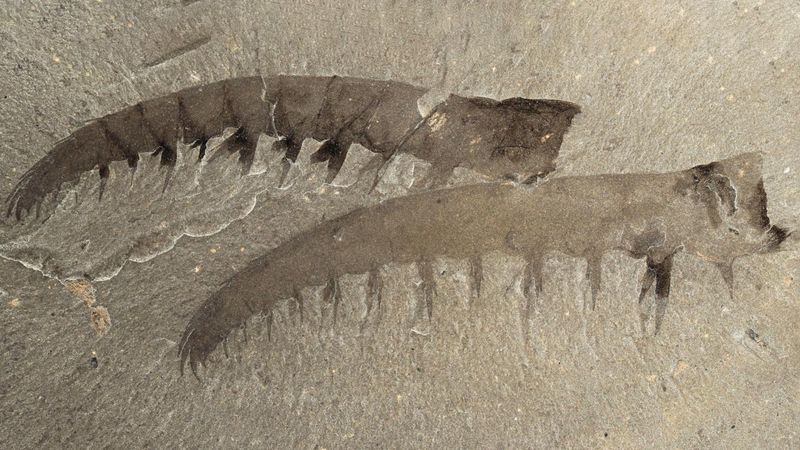
The Anomalocaris appendage fossil offers a glimpse into the enigmatic Cambrian seas. As one of the earliest known predators, Anomalocaris wielded these appendages to capture prey.
Resembling a hybrid of shrimp and squid, this creature thrived over 500 million years ago. These fossils reveal the innovative adaptations of early arthropods, showcasing intricate structures designed for hunting. The discovery of such relics opens a window to a time when life was rapidly diversifying in Earth’s oceans.
Each segment of the appendage tells a story of evolutionary experimentation and success. It’s a fossil that whispers secrets of ancient marine life.
Plesiosaur Flipper
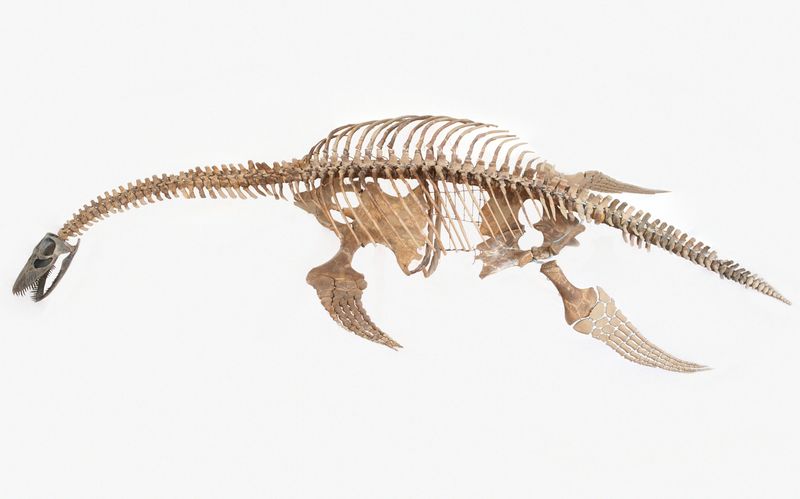
The plesiosaur flipper, a marvel of aquatic engineering, is a fossilized testament to the adaptability of marine reptiles. These flippers, once part of a graceful yet powerful swimmer, propelled plesiosaurs through Jurassic seas.
Their unique paddle-like structure offers insights into the swimming techniques of these ancient reptiles, adapted for speed and agility. This fossil invites exploration of a world dominated by marine giants, where plesiosaurs ruled the waves with their sleek bodies.
Uncovering such a relic is akin to finding a piece of Earth’s evolutionary puzzle, a reminder of the diverse life forms that have inhabited its depths.
Titanoboa Vertebra
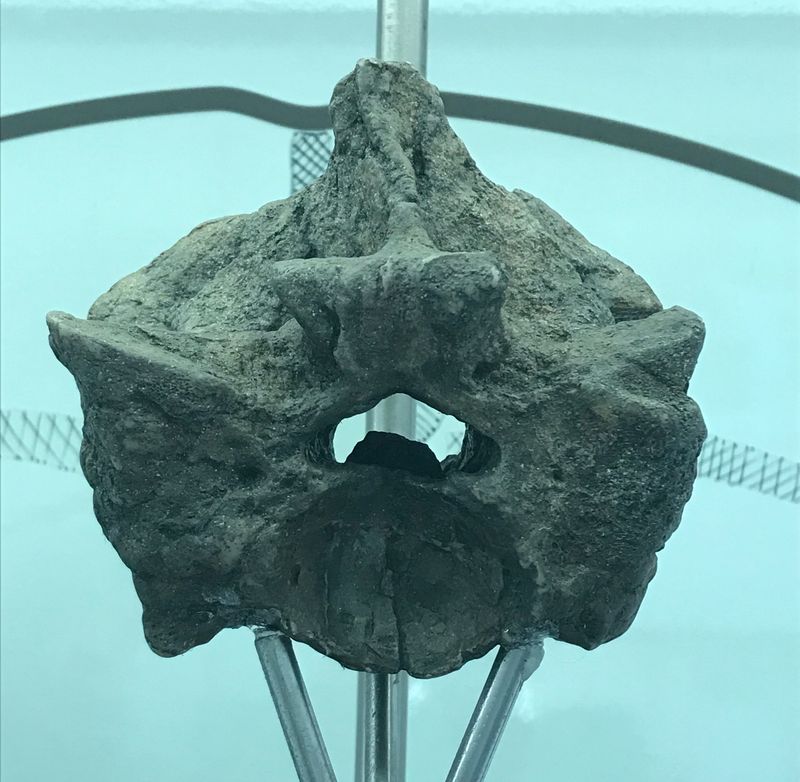
The Titanoboa vertebra, an astonishing fossil, signifies the grandeur of ancient serpents that slithered through prehistoric rainforests. As the largest snake ever discovered, Titanoboa’s vertebrae reveal a creature that could reach over 40 feet in length.
This colossal fossil evokes the primal fear and awe that such giants inspired. Imagine the lush, humid jungles where this predator dominated the ecosystem, coiling silently among the shadows.
Each vertebra unravels details about its immense size and strength, painting a vivid picture of past ecosystems. Encountering this fossil is like meeting a ghost from an exotic, forgotten world.
Mosasaur Jaw
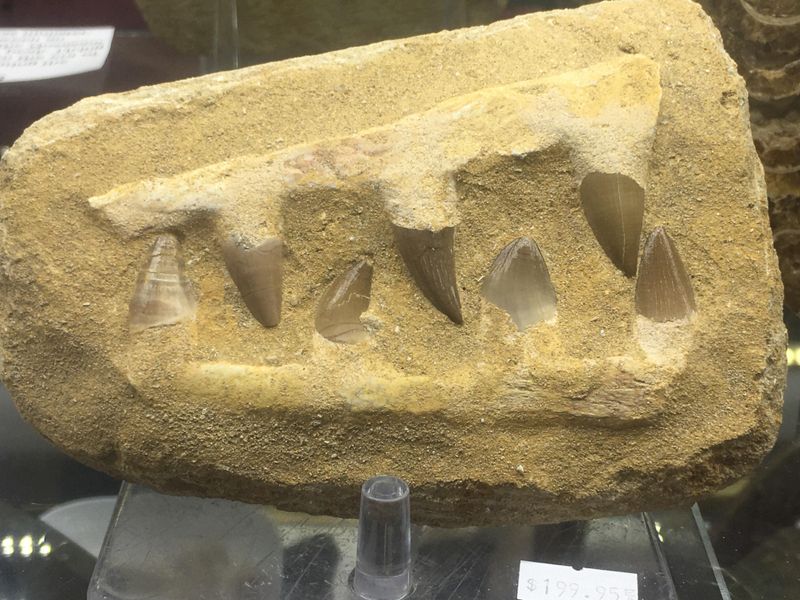
The mosasaur jaw fossil, with its rows of sharp teeth, uncovers the story of a formidable marine predator. Roaming the Cretaceous seas, mosasaurs hunted with precision, rivaling modern orcas in their dominance. This jaw, often found in sedimentary rock, illustrates the powerful bite of these ancient reptiles.
Their success in the oceans reflects evolutionary adaptations that made them apex predators of their time. Holding this fossil is like holding a chapter from Earth’s marine history, where mosasaurs reigned supreme.
Each tooth whispers tales of ancient seas teeming with life, a narrative etched in stone for millions of years.
Helicoprion Tooth Whorl
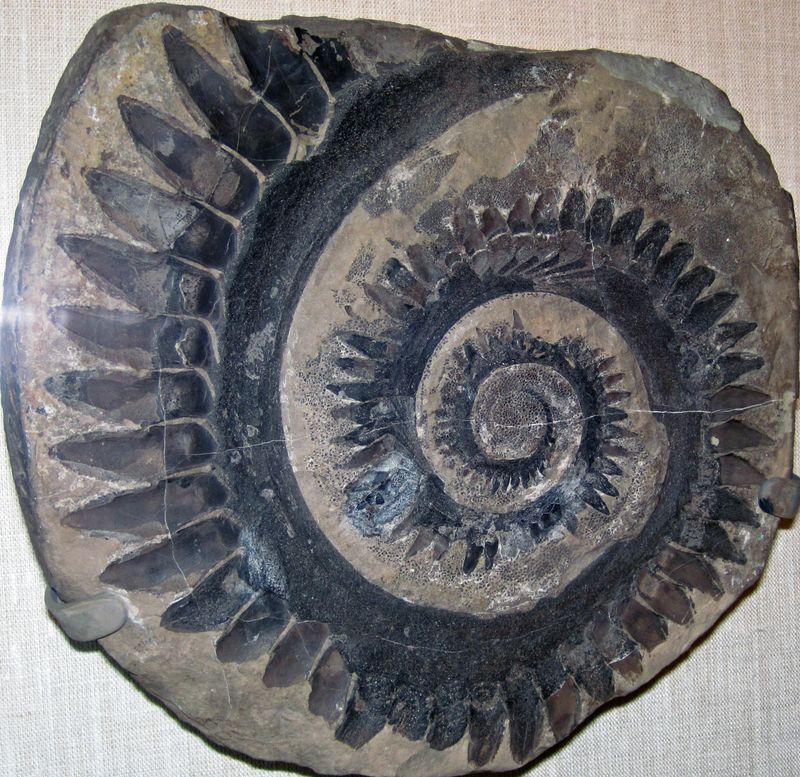
The Helicoprion tooth whorl is a fossil marvel that continues to intrigue paleontologists. Unlike any other creature, Helicoprion had a spiral arrangement of teeth, resembling a buzz saw.
This bizarre adaptation raises questions about its diet and hunting methods. Found in marine deposits, the tooth whorl opens a window into Earth’s ancient oceans.
Imagine the enigma of this prehistoric predator, slicing through the seas millions of years ago. Each spiral of the fossil tells a tale of evolutionary creativity, challenging our understanding of early marine life. It’s a relic of nature’s endless experimentation and wonder.
Diplodocus Tail Vertebrae
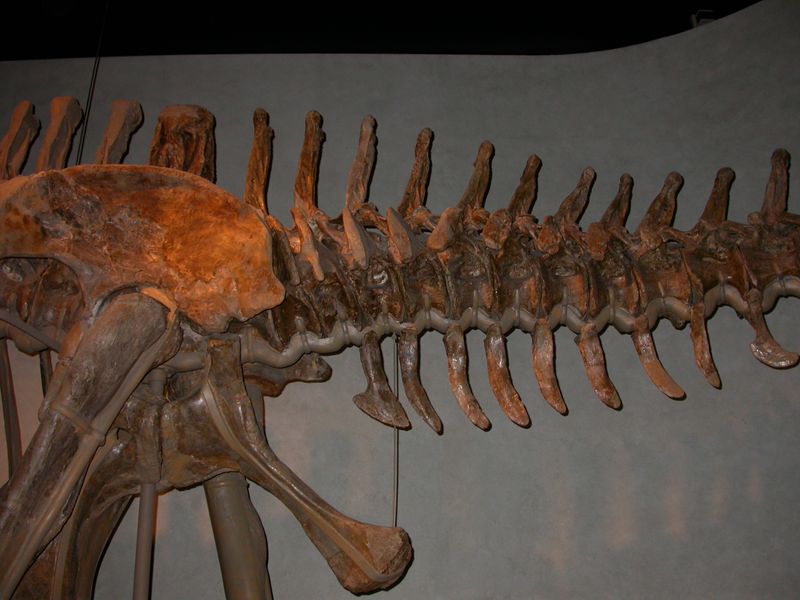
The Diplodocus tail vertebrae, a series of massive fossils, unveil the elegance and utility of this dinosaur’s tail. Known for its immense length, the Diplodocus wielded its tail as both a defensive weapon and a balancing tool.
These vertebrae reveal how its tail could reach lengths rivaling its body, a marvel of anatomical engineering. Imagine the sweeping sound through Jurassic air as this giant moved.
Each vertebra tells stories of a time when such giants roamed vast plains. Holding these fossils connects us to a majestic past, where dinosaurs like Diplodocus shaped the ancient landscapes with their presence.
Dimetrodon Spines
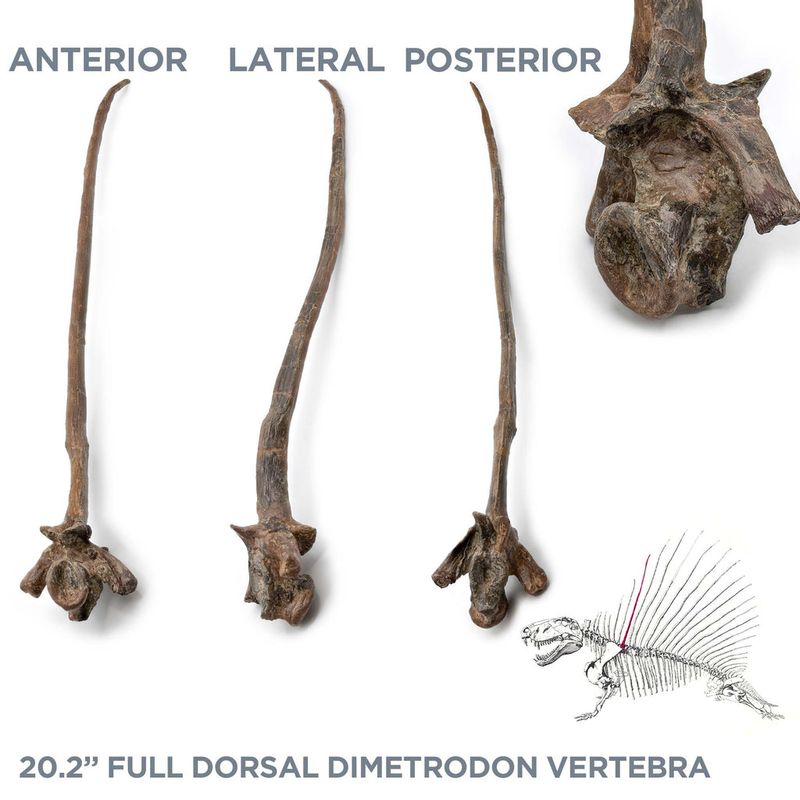
The Dimetrodon spines, towering fossils, hint at the unique adaptations of this early synapsid. Often mistaken for a dinosaur, Dimetrodon wielded these spines as thermoregulatory tools. This ancient predator thrived in Permian swamps, its sail-like back casting shadows on prehistoric waters.
These spines unveil insights into the evolutionary bridge between reptiles and mammals. Each fossilized spine represents a piece of Earth’s intricate evolutionary tapestry. Holding them calls forth a world before the dinosaurs, where creatures like Dimetrodon ruled.
It’s a reminder of the ever-shifting nature of life on Earth, where each adaptation tells a story of survival.
Gigantopithecus Jaw
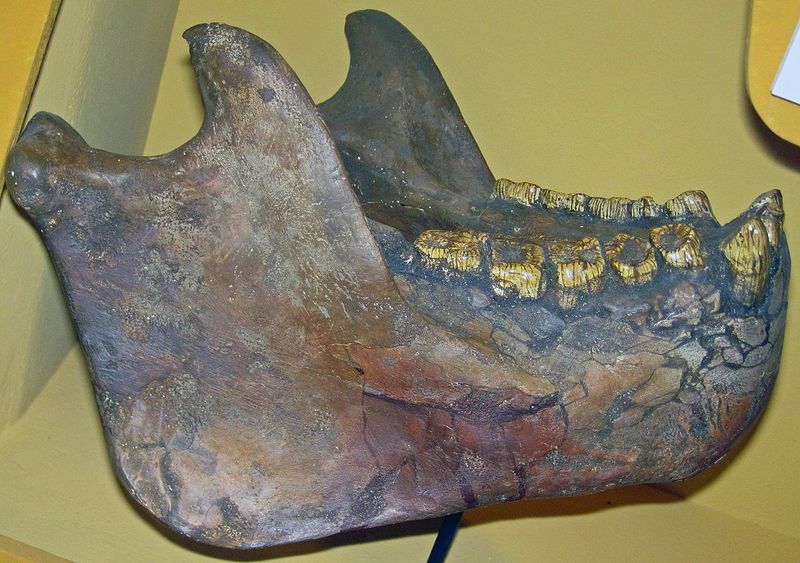
The Gigantopithecus jaw fossil reveals the existence of Earth’s largest known primate. Thriving in Southeast Asia during the Pleistocene, this giant ape’s jaw hints at a diet rich in vegetation.
Each tooth and curve of the jaw unravels tales of a creature that once towered over its primate relatives. This fossil challenges our understanding of primate evolution, offering clues to the rich biodiversity of ancient forests.
Holding the Gigantopithecus jaw feels like clasping a piece of Earth’s primate lineage, inviting reflections on the diverse forms life has taken. It’s a reminder of the vast potential and mystery within evolution.
Basilosaurus Skull
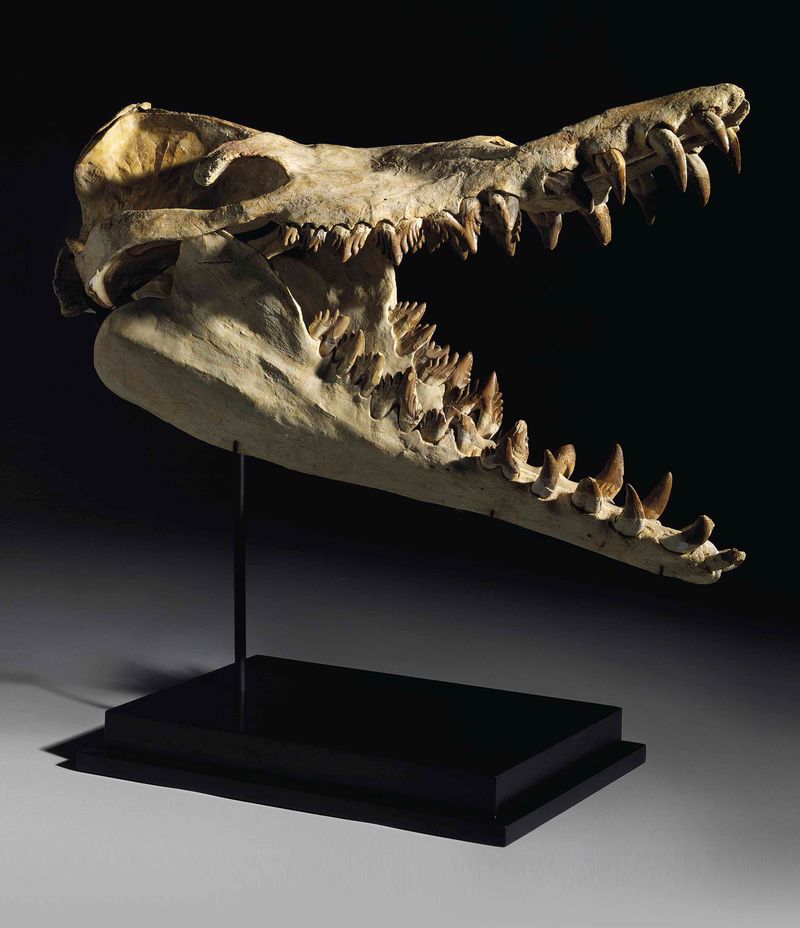
The Basilosaurus skull, a fossil of grandeur, unveils the story of early whales that once dominated ancient seas. Despite its name, Basilosaurus was a formidable prehistoric whale, not a reptile.
This skull, with its elongated snout and sharp teeth, tells of a predator that navigated Eocene oceans with prowess. These fossils offer insights into the transition from land to sea, highlighting evolutionary milestones. Uncovering such a relic is like discovering a chapter of Earth’s cetacean history, a reminder of the incredible journey life has taken.
It’s a fossil that beckons us to explore ancient marine ecosystems.
Smilodon Fang
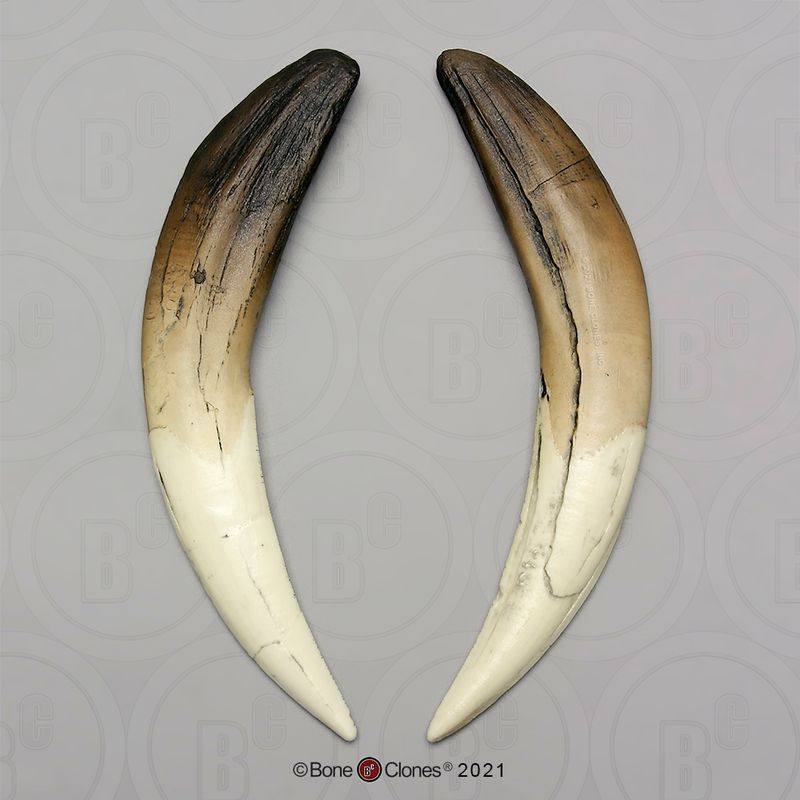
The Smilodon fang, a striking fossil, captures the essence of the saber-toothed cat’s predatory prowess. With fangs reaching up to seven inches, Smilodon was a formidable predator of the Pleistocene era.
These fangs, designed for precision strikes, tell stories of fierce hunts in ancient landscapes. Each curve of the fang unravels tales of skill and survival in a world where adaptability was key.
Holding this fossil is like holding a piece of Earth’s wild past, where Smilodon reigned supreme. It’s a testament to nature’s incredible designs and the relentless drive of evolution. A relic of the wild’s beauty.
Archaeotherium Skull
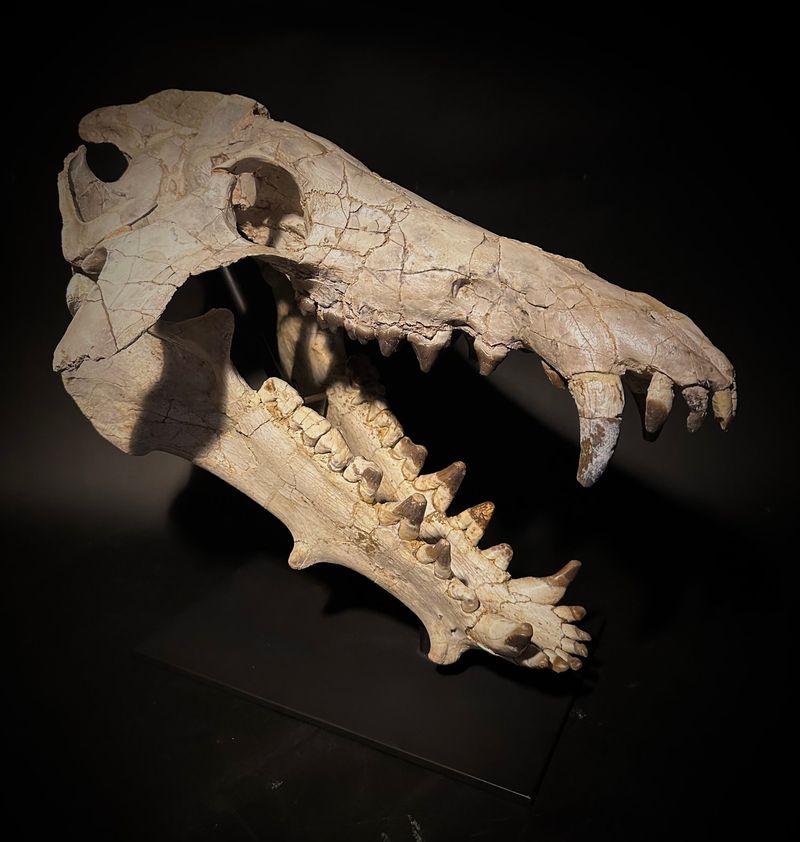
The Archaeotherium skull, a fossil of formidable structure, hints at the life of an ancient entelodont. Often dubbed “hell pigs,” these creatures roamed Eocene landscapes with a blend of carnivorous and scavenging habits.
The robust skull and teeth unveil tales of a creature perfectly adapted to its environment, utilizing both strength and opportunism. Discovering such a fossil brings forth images of a world teetering on the brink of modern mammalian diversity.
Holding this skull is akin to holding a piece of Earth’s fierce evolutionary story, where even the most bizarre creatures found their niche. It’s a relic of adaptability.
Megalodon Tooth
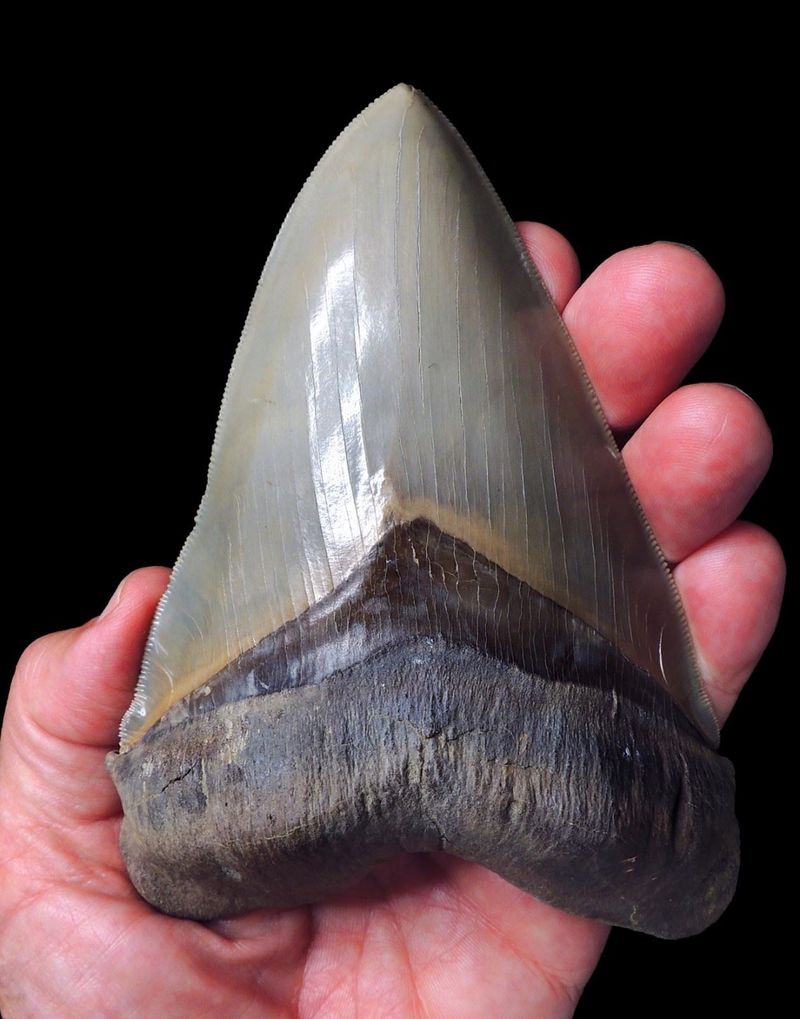
The Megalodon tooth, a colossal fossil, stands as a testament to the might of Earth’s ancient sharks.
These teeth, some over seven inches long, reveal a predator that dwarfed the great white shark. Roaming the Cenozoic seas, Megalodon was an apex predator, its bite leaving marks on whale bones.
Each serration and curve of the tooth tells stories of ocean dominance and evolutionary success. Holding this fossil is like holding a piece of Earth’s oceanic history, where giants ruled the waves. It’s a reminder of the incredible power and adaptability of ancient marine life, etched in stone.
Therizinosaurus Claw
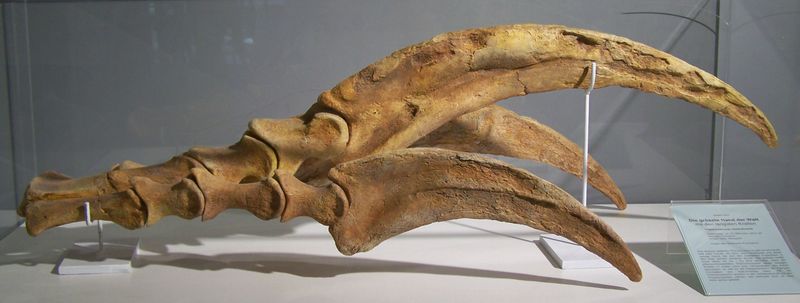
The Therizinosaurus claw, a fascinating fossil, reveals the peculiar adaptations of this enigmatic dinosaur. These claws, reaching up to three feet, were likely used for foraging and defense.
Living in the Cretaceous period, Therizinosaurus defied conventional dinosaur traits, with herbivorous tendencies despite its fearsome appearance. Each curve of the claw invites curiosity about its lifestyle and ecological role. Holding this fossil is like grasping a piece of Earth’s evolutionary puzzle, where creativity and diversity flourished.
It’s a testament to the complexity of life and the endless possibilities within evolution’s grand narrative. A relic of nature’s ingenuity.
Paraceratherium Femur
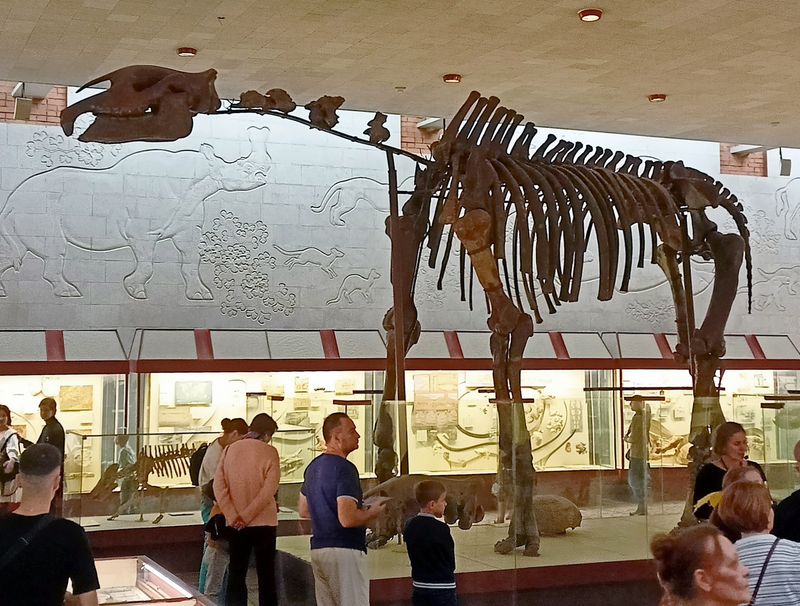
The Paraceratherium femur, a colossal bone fossil, hints at the sheer size of Earth’s largest land mammal. Thriving in the Oligocene epoch, this creature dwarfed modern rhinoceroses.
The femur, often over six feet long, supports theories of its towering height and massive build. Discovering such a fossil opens windows to a world where giants roamed open plains, shaping ecosystems with their presence. Each inch of the femur tells tales of adaptation and survival in vast, untamed landscapes.
Holding this relic is like holding a piece of Earth’s majestic past, inviting awe and wonder about the giants that once existed.
Pterosaur Egg
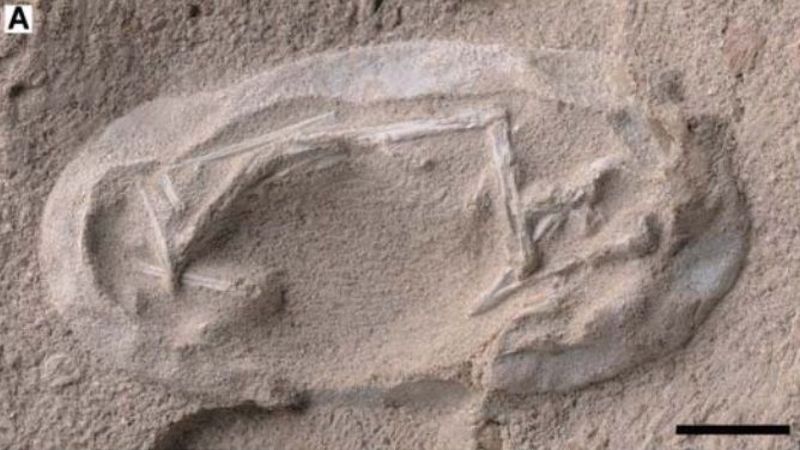
The pterosaur egg, a delicate fossil, offers insights into the reproductive habits of these ancient flying reptiles. Found in Cretaceous deposits, these eggs unveil the life cycle of pterosaurs, revealing their nesting behaviors and parental care.
Each fossilized egg tells stories of a time when the skies were ruled by these winged creatures. Imagine the bustling nesting sites, filled with the sounds of young pterosaurs emerging.
Holding this egg is like holding a piece of Earth’s avian history, where flight evolved in myriad forms. It’s a reminder of the nurturing aspect of life, etched in stone.
Spinosaurus Vertebral Sail

The Spinosaurus vertebral sail, a striking fossil, reveals the unique adaptations of this aquatic dinosaur. Its sail-like structure, towering above its body, likely played roles in thermoregulation and display.
Living near Cretaceous rivers, Spinosaurus thrived as both predator and scavenger. Each vertebra of the sail tells stories of a dinosaur that defied traditional categorizations, blending terrestrial and aquatic lifestyles. Holding this fossil is like holding a piece of Earth’s evolutionary innovation, where nature’s designs found harmony in diversity.
It’s a reminder of the endless adaptability of life, captured in the bones of ancient giants. A relic of Earth’s creativity.
Hallucigenia Footprint
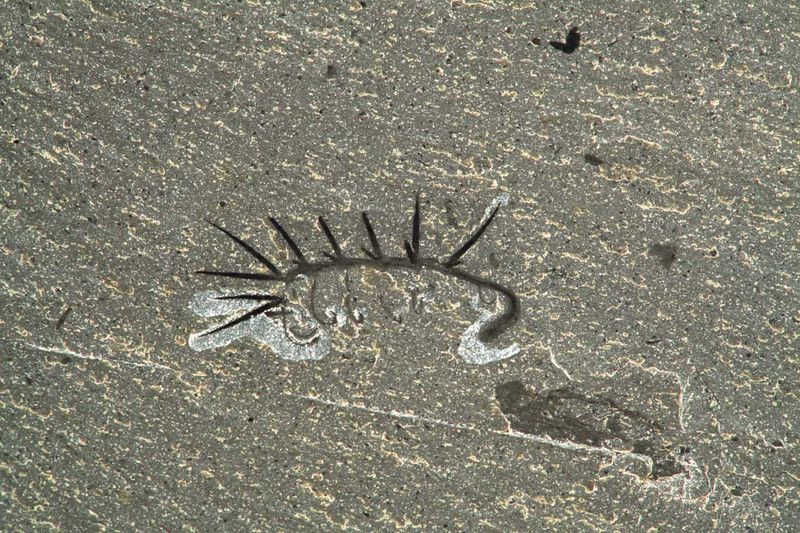
Imagine a creature so bizarre that scientists named it Hallucigenia. This tiny, worm-like fossil from the Cambrian period features an array of tentacle-like legs and a row of spikes along its back. It measures less than two inches, yet its strange anatomy baffles paleontologists.
Hallucigenia’s elusive nature ignites curiosity about ancient ecosystems. Its unique body plan challenges our understanding of evolutionary paths. Discovered in British Columbia’s Burgess Shale, this fossil highlights the diversity of life millions of years ago.
Hallucigenia invites us to ponder the possibilities of alien-like creatures thriving in Earth’s past.

